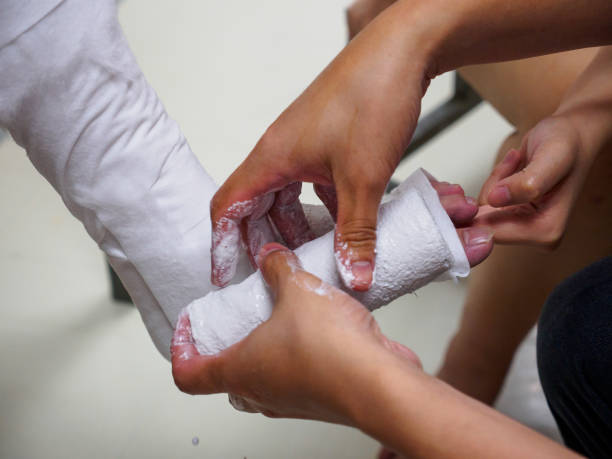Categories
Latest blog
When a bone fracture or orthopedic injury occurs, one of the most trusted medical tools for immobilization is the POP bandage, also known as the Plaster of Paris Bandage or P.O.P. bandage. Despite advances in medical casting materials, this classic bandage remains a gold standard in hospitals, clinics, and emergency care centers worldwide.
In this article, we’ll explore what a POP bandage is, how it works, its benefits, and why healthcare professionals continue to rely on it for effective fracture management.
A POP bandage (Plaster of Paris Bandage) is a cotton gauze roll coated with calcium sulfate hemihydrate (Plaster of Paris). When the bandage is soaked in water, it reacts to form gypsum — a firm, smooth, and supportive cast that holds bones and joints in place during healing.
It’s called “P.O.P. bandage” because of the main material: Plaster of Paris, named after the original gypsum deposits found near Paris, France.
Activation: The bandage is dipped in water for a few seconds.
Application: It’s wrapped around the injured limb with gentle pressure.
Setting: Within minutes, it hardens into a rigid cast.
Immobilization: The cast prevents unwanted movement, allowing the bone to heal naturally.
Because of its molding capability, the POP bandage can be shaped to match body contours precisely — making it ideal for complex or irregular fractures.
Smooth Finish: Provides a professional, clean surface for clinical presentation.
High Strength: Maintains structure even under long-term wear.
Easy Application: Requires minimal training to apply effectively.
Cost-Effective: More affordable than fiberglass alternatives.
Breathable and Comfortable: Allows skin ventilation while keeping the wound area secure.
Although synthetic materials like fiberglass are lighter, plaster of paris bandages are still widely preferred in many hospitals for their superior molding, affordability, and ease of removal. In teaching hospitals, they are often used for demonstration and practical orthopedic training.
| Feature | POP Bandage | Fiberglass Cast |
|---|---|---|
| Setting Time | 2–5 minutes | 3–8 minutes |
| Cost | Low | Higher |
| Comfort | Excellent | Good |
| Moldability | High | Medium |
| Common Use | Fracture immobilization | Sports injury splints |
Limb fracture immobilization
Temporary splinting in trauma units
Orthopedic surgery post-care
Bone alignment correction
Teaching and clinical demonstrations

Immerse in water for 5–10 seconds.
Gently squeeze to remove excess water.
Wrap smoothly around the injured area.
Mold to shape; avoid wrinkles.
Allow to dry completely before moving the limb.
TICARE® manufactures high-quality POP bandages designed for professional use.
Each roll is coated with premium medical-grade plaster, ensuring fast setting, minimal powder loss, and consistent strength. Ideal for hospitals, clinics, and emergency departments worldwide.
Explore our product here: TICARE® POP Bandage (Plaster of Paris Bandage)
Q1: What is the full form of POP bandage?
POP stands for Plaster of Paris Bandage, a medical dressing used to immobilize fractures.
Q2: How long does a POP bandage take to set?
It typically hardens within 2–5 minutes after dipping in water, depending on thickness and temperature.
Q3: Can a POP bandage be reused?
No. POP bandages are single-use and should be replaced once removed.
Q4: What are the main materials in a POP bandage?
Cotton gauze and plaster of paris (calcium sulfate hemihydrate).
The POP bandage remains one of the most dependable tools in orthopedic medicine.
Its combination of strength, simplicity, and affordability makes it an essential product for hospitals, clinics, and first-aid settings.
When reliability matters most, TICARE® POP Bandages deliver professional-grade performance with consistent quality.